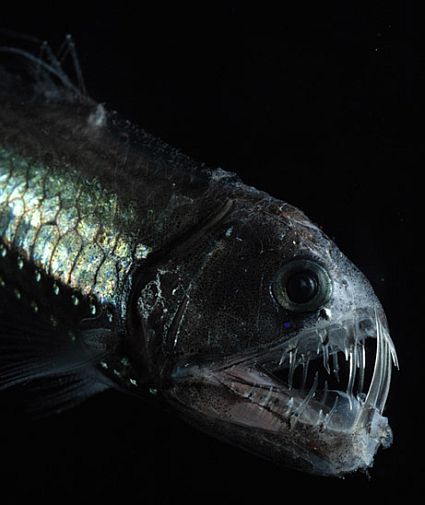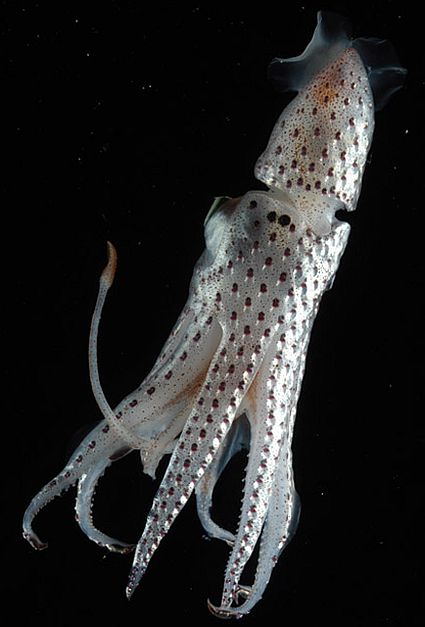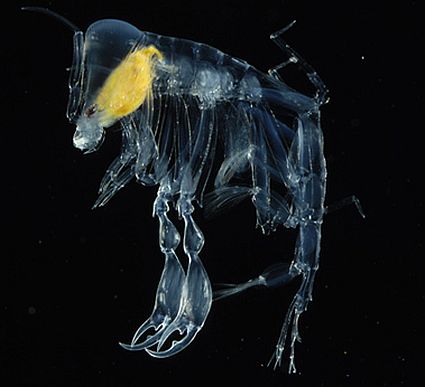
This viperfish is a real-life predator that lurks in one of the world’s most remote locations.
Deep depths of the ocean remain an elusive mystery, as technology advances man is trying to unravel it. In the same effort, a diving robot has retrieved samples and images of creatures living in the Mid-Atlantic Ridge. Pictures beamed back included those of exotically colored corals, worms, unusual sea cucumbers, and an abundance of weird fish.
The Mid-Atlantic Ridge, is an underwater range that divides the North Atlantic Ocean in two, it runs from Iceland to the Azores islands west of Portugal. It is still relatively unexplored The Norway-based MAR-ECO project and the Census of Marine Life program coordinated the survey. Exploring life in the North Atlantic Ocean at various depths of 800 to 3,500 metres, the 31 scientists surfaced with more knowledge.

The mismatched eyes of this jewel squid are natural, giving them further scope for prey in the deep’s darkness.
They were on board the £40 million royal research ship, the Royal Research Ship, James Cook, One of the most most advanced research vessels. Using remotely operated vehicles equipped with digital cameras they were able to capture images of life on the peaks and valleys of very rugged terrain.
What all did they find?
Colorful sponges and corals encrust rocky cliffs, whereas areas of soft sediment are populated by starfish, brittle-stars, sea cucumbers and burrowing worms. Fishes, crabs and shrimps forage over the ridge exploiting whatever they can find. Trawls, traps and corers have brought back thousands of specimens for study back in the laboratory.

Is it invisible? This tiny shrimplike creature called an amphipod shows everything it has, inside and out, in an attempt to disappear.
At least one new species, a tiny crustacean called a seed shrimp, is likely new to science. Another exciting find was a “spiral poo worm,” an animal first identified in 2005 that deposits spiral-shaped feces, some of which have been found in the fossil record dating back hundreds of millions of years.
Further voyages planned for 2008 and 2009 will get more samples, for now enjoy seeing these pictures, new evidence of the earths biodiversity and wonder!
Images
Read


